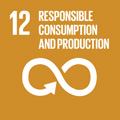- Docente: Stefano Bonduà
- Credits: 6
- SSD: ING-IND/28
- Language: English
- Teaching Mode: In-person learning (entirely or partially)
- Campus: Bologna
-
Corso:
Second cycle degree programme (LM) in
Geology and Territory (cod. 9073)
Also valid for Second cycle degree programme (LM) in Geology for Sustainable Development (cod. 6050)
Second cycle degree programme (LM) in Environmental Engineering (cod. 8894)
-
from Feb 19, 2025 to Jun 12, 2025
Learning outcomes
Students will acquire training that will be able to plan, direct, control open and underground mining and produce and/or examine properly technical documents in support of procedures of concessions to exploit mineral deposits.
Course contents
Requirements/Prior knowledge
Fluent spoken and written English is a necessary pre-requisite: all lectures and tutorials, and all study material will be in english.
Course Contents
The course provides the basic principles of design, management and control of mining and quarrying and the most current guidelines for the solution of typical problems of mining. The design is examined in light of the interconnection with the protection of safety and environmental criteria of economic, financial and market regulations, with particular attention to the environmental aspects of the operations involved in mining and excavation. The fundamental aspects of design, management and control are discussed with emphasis, with examples and practical applications. Will be discussed the importance of planning procedures, organization and management processes and elementary actions. Particular attention is paid to the mining methods and techniques of exavation (culling mechanical, explosive, etc..). Methods for assessing the stability of mining excavations.
Program and contentOre body evaluation, mineral exploration, ore reserve calculation, ore body ground conditions. Sampling, dilution and recovery. Open-pit or underground mining. Choosing an underground mining method (room and pillar mining, sublevel stoping, cut and fill mining, cemented fill mining, shrinkage, long wall mining, caving methods, sublevel caving, block caving mining, solution mining). .Guide lines for selecting a mining method. General mine planning. Environmental considerations. Underground equipment (primary breaking, loading and hauling and dumping). Ground support. Ancyllary equipment. Costs of underground mining materials and supplies. Financial considerations. Foundations for design. Mine ventilation. Design of underground blasting. Effects induced by blasting.
Readings/Bibliography
W.A. HUSTRULID, UNDERGROUND MINING METHODS
C.J. HALL, MINE VENTILATION ENGINEERING
V.S. VUTUKURI, R.D. LAME, ENVIRONMENTAL ENGINEERING IN MINES
Teaching methods
Lectures
Assessment methods
The exam consists in a oral colloquium. The colloquium is addressed to evaluate critical and methodological skills gained by the student, who will be invited to discuss the topics covered during the course.
The oral examination, lasting about 30 minutes, is without the aid of notes or books.
The oral test consists normally of three questions on various topics. During the discussion are generally made more in-depth questions.
The student's ability to deal with the sources and bibliographical material, necessary to identify the useful information for the assessment of mining works, will be particularly appreciated.
The oral colloquium
The achievement of an organic vision of the issues addressed during the lessons, demonstrating mastery of expression and specific language, will be assessed with a mark of excellence. A more mechanical and/or mnemonic knowledge, synthesis and analysis of non-articulating and/or correct language but not always appropriate assessments, will lead to a discrete score; training gaps and/or inappropriate language, although in a context of a minimal knowledge of the material, will lead to votes that will not exceed the sufficiency. Training gaps, inappropriate language, lack of guidance within the reference materials offered during the course will be evaluated negatively.Teaching tools
Power Point presentations
Videos
Office hours
See the website of Stefano Bonduà
SDGs


This teaching activity contributes to the achievement of the Sustainable Development Goals of the UN 2030 Agenda.
